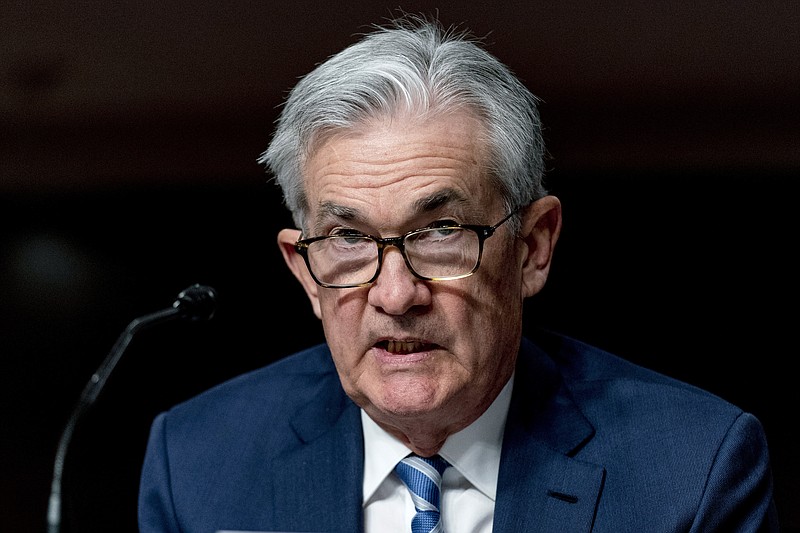Stocks had a bit of a rocky time last week, reacting to the release of minutes from the meeting of the Federal Reserve, which hinted at somewhat more aggressive action to fight inflation.
Given the recent surge in prices, the Fed now sees the need to reduce the unprecedented emergency stimulus that helped the U.S. economy through the pandemic. The central bank will reduce the rate at which it buys Treasury and mortgage-backed bonds and looks set to begin hiking the benchmark interest rate by early Spring. While the move was widely anticipated and viewed as overdue by many economists, stock investors responded to Pavlov's bell by hitting the "sell" button. Were they right to do so? Or is this an overreaction?
Wall Street has harbored an unhealthy obsession with the Fed going back to the late 1980s under the leadership of Alan Greenspan. The central bank's deliberations had traditionally been shrouded in secrecy to minimize distortions to financial markets. But the notoriously saturnine chair, Greenspan, was especially cryptic, leading pundits and speculators to attempt to divine the Fed's intentions based upon, among other things, the thickness of Greenspan's briefcase.
Greenspan's successors, notably Ben Bernanke but followed by Janet Yellen and Jerome Powell, have worked diligently to substantially increase communication with the public regarding the Fed's decision process and actions. While laudable, the increase in transparency seems only to have stoked the intensity of the obsession as evidenced last week.
So, given the near certainty that interest rates are going to rise and the Fed will ease off the gas pedal, should investors panic?
Nah. Leave that to the fortune tellers on the financial networks. Maybe even change the channel. Long-term investors should stick to the plan and tune out the noise.
First, a digression. All else equal, it is true that an increase in bond yields should theoretically cause stock prices to fall in the short run. This is a mathematical relationship, because future cash flows like dividends or expected gains on sales are worth less in today's dollars as interest rates rise. This is the perspective the market took last week.
But all else is never equal, and the level of interest rates is only one of many factors that determine asset prices, particularly during periods of economic expansion such as we are currently enjoying. Perhaps the most important element at present is the rate of growth in corporate profits, which has been running at a record clip in recent quarters and is poised to continue for the near future. Strong economic growth typically pressures inflation and interest rates to migrate higher, but earnings growth overpowers any drag from rising bond yields until the cycle is well advanced.
Another important factor is the absolute level of rates from which the increase is experienced. A move in the 10-year Treasury yield from 10% to 12% is one thing; inching from 1% to 3% is quite another. Real (after inflation) interest rates have been negative for an extended period and would have to move substantially higher to significantly impede the expansion plans of businesses and consumers, assuming corporate profits and household incomes continue to expand. Historical data going back six decades finds that the stock market has performed better during periods where interest rates are: 1) high and falling, or 2) low and rising. Clearly the latter obtains today.
And while historical correlations between bond rates and stock returns are weak, there is some statistical evidence that rising real interest rates net of inflation support higher stock valuations as measured by market price to earnings ratios (P/E). That is, stock investors are willing to pay more per dollar of profits as real interest rates rise, up to a point, if inflation is reasonably well-mannered. We appear to be well below that point, particularly if supply chain issues continue to improve throughout 2022.
While attempting to time the market around inevitable and unpredictable corrections is a fool's errand, long-term investors might still consider some minor course corrections. The prospect of higher bond yields can hurt growth stocks, as might be expected, since more speculative companies have a longer payoff horizon and may see present values decline more due to rising rates. Value-oriented and cyclical sectors, including industrials, financials and energy often benefit due to improving current cash flows and operating leverage in an expansion. As for bonds, higher yields present risks to longer-dated maturities. Shortening up on bond duration, as well as considering some exposure to floating rate investments, may be prudent. In other words, rebalance your exposure considering the new landscape, but don't run away. It's also a good time to sit down with your financial adviser for a review.
Slow and steady as she goes remains the best way forward, no matter the thickness of Jerome Powell's briefcase.
Chris Hopkins is a chartered financial analyst in Chattanooga.
